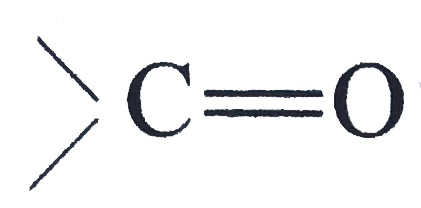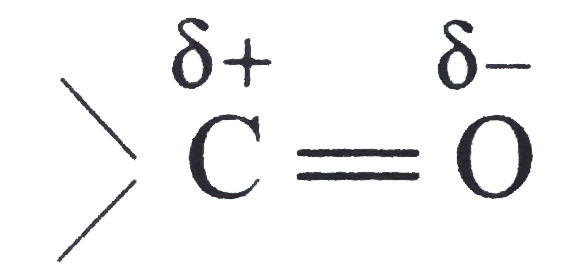Among the given compounds, the most susceptible to nucleophilic attack at the carbonyl group is
CH3COCl
CH3COOCH3
CH3CONH2
CH3COOCOCH3
The correct Answer is:A
To determine which compound is most susceptible to nucleophilic attack at the carbonyl group, we need to analyze the given compounds based on the electronic effects exerted by their substituents on the carbonyl carbon. The carbonyl group (C=O) has a carbon atom that carries a partial positive charge due to the electronegativity difference between carbon and oxygen. Nucleophiles are attracted to this partial positive charge.
1. Identify the Compounds: The compounds given are:
- Acetyl chloride (CH3C(=O)Cl)
- Acetaldehyde (CH3C(=O)H)
- Acetamide (CH3C(=O)NH2)
- Acetic acid (CH3C(=O)OH)
2. Analyze Electron-Withdrawing and Electron-Donating Effects:
- Acetyl Chloride (CH3C(=O)Cl): The chlorine atom is a strong electron-withdrawing group due to its -I (inductive) effect. This increases the partial positive charge on the carbonyl carbon, making it more susceptible to nucleophilic attack.
- Acetaldehyde (CH3C(=O)H): The hydrogen atom does not have a significant electron-withdrawing effect. Thus, the carbonyl carbon is less positive compared to acetyl chloride.
- Acetamide (CH3C(=O)NH2): The amine group (NH2) has a +M (mesomeric) effect, which donates electron density to the carbonyl carbon, reducing its susceptibility to nucleophilic attack.
- Acetic Acid (CH3C(=O)OH): The hydroxyl group (OH) also has a +M effect, which decreases the positive charge on the carbonyl carbon, making it less susceptible to nucleophilic attack.
3. Compare the Susceptibility:
- Acetyl chloride has the strongest electron-withdrawing effect due to chlorine, leading to a higher positive charge on the carbonyl carbon.
- Acetaldehyde has a moderate susceptibility due to the lack of strong electron-withdrawing groups.
- Acetamide and acetic acid are the least susceptible due to the electron-donating effects of the NH2 and OH groups.
4. Conclusion: Among the given compounds, acetyl chloride (CH3C(=O)Cl) is the most susceptible to nucleophilic attack at the carbonyl group due to the strong electron-withdrawing effect of the chlorine atom.
Final Answer:
The most susceptible compound to nucleophilic attack at the carbonyl group is Acetyl Chloride (CH3C(=O)Cl).
- Acetyl chloride (CH3C(=O)Cl)
- Acetaldehyde (CH3C(=O)H)
- Acetamide (CH3C(=O)NH2)
- Acetic acid (CH3C(=O)OH)
- Acetyl Chloride (CH3C(=O)Cl): The chlorine atom is a strong electron-withdrawing group due to its -I (inductive) effect. This increases the partial positive charge on the carbonyl carbon, making it more susceptible to nucleophilic attack.
- Acetaldehyde (CH3C(=O)H): The hydrogen atom does not have a significant electron-withdrawing effect. Thus, the carbonyl carbon is less positive compared to acetyl chloride.
- Acetamide (CH3C(=O)NH2): The amine group (NH2) has a +M (mesomeric) effect, which donates electron density to the carbonyl carbon, reducing its susceptibility to nucleophilic attack.
- Acetic Acid (CH3C(=O)OH): The hydroxyl group (OH) also has a +M effect, which decreases the positive charge on the carbonyl carbon, making it less susceptible to nucleophilic attack.
- Acetyl chloride has the strongest electron-withdrawing effect due to chlorine, leading to a higher positive charge on the carbonyl carbon.
- Acetaldehyde has a moderate susceptibility due to the lack of strong electron-withdrawing groups.
- Acetamide and acetic acid are the least susceptible due to the electron-donating effects of the NH2 and OH groups.
The most susceptible compound to nucleophilic attack at the carbonyl group is Acetyl Chloride (CH3C(=O)Cl).
Topper's Solved these Questions
- BOOK - PRADEEPCHAPTER - ALDEHYDES, KETONES AND CARBOXYLIC ACIDS EXERCISE - COMPETITION FOCUS JEE (MAIN AND ADVANCED)/MEDICAL ENTRANCE SPECIEAL (MULTIPLE CHOICE QUESTIONS-II WITH ONE OR MORE THAN ONE CORRECT ANSWER)1videos
ALDEHYDES, KETONES AND CARBOXYLIC ACIDS
- BOOK - PRADEEPCHAPTER - ALDEHYDES, KETONES AND CARBOXYLIC ACIDS EXERCISE - COMPETITION FOCUS JEE (MAIN AND ADVANCED)/MEDICAL ENTRANCE SPECIEAL (MULTIPLE CHOICE QUESTIONS-II WITH ONE CORRECT ANSWER)12videos
ALDEHYDES, KETONES AND CARBOXYLIC ACIDS
- BOOK - PRADEEPCHAPTER - ALDEHYDES, KETONES AND CARBOXYLIC ACIDS EXERCISE - VALUE BASED QUESTIONS WITH ANSWERS3videos
ALDEHYDES, KETONES AND CARBOXYLIC ACIDS
- BOOK - PRADEEPCHAPTER - ALCOHOLS, PHENOLS AND ETHERSEXERCISE - IMPORTANT QUESTIONS FOR BOARD EXAMINATIONS.29videos
ALCOHOLS, PHENOLS AND ETHERS
- BOOK - PRADEEPCHAPTER - APPENDIXEXERCISE - MODEL TEST PAPER <br> (Section C )15videos
APPENDIX
Similar Questions
Knowledge Check
- Question 1 - Select One
Among the given compounds , the most susceptible to nuclephilic attack at the carbonyl group is .
A B
B CH3C−CHOD
CH3C−CHOD
- Question 2 - Select One
Among the given compounds, the most susceptible to nucleophilic attack at the cabonyl group is:
AMeCOOCOMeBMeCHOCMeCOOMeDMeCOCl - Question 3 - Select One
Among the given compounds, the most susceptible to nucleophilic attack at the carbonyl carbon is
AMeCOClBMeCHOCMeCOOMeDMeCOOCOMe
The most susceptible compound to nucleophilic attack at the carboyl carbon among the given bellow is
View SolutionWhich of the following compounds is resistant to nucleophilic attack by hydroxyl ion?
View SolutionWhich carbonyl group of the given compound is most reactive for nucleophilic addition reaction ?
 View Solution
View SolutionAldehydes and ketones ar specially susecptible to nucleophilic addition because carbonyl group
 is polar (due to electronegativity difference between carbon and oxygen)
is polar (due to electronegativity difference between carbon and oxygen)

Positive charge on carbon makes it reactive towards the nucleophili. This addition is catalysed by acid.
Reactivity of carbonyl compound towards nucleophilic addition increases with increases in the electron deficiency at carbonyl carbon. Thus, (-I.E.)groups increase while (+I.E.) groups decrease the reactivity of carbonyl compound.
Which among teh following carbonyl compounds is most pola?View SolutionAldehydes and ketones ar specially susecptible to nucleophilic addition because carbonyl group
 is polar (due to electronegativity difference between carbon and oxygen)
is polar (due to electronegativity difference between carbon and oxygen)

Positive charge on carbon makes it reactive towards the nucleophili. This addition is catalysed by acid.
Reactivity of carbonyl compound towards nucleophilic addition increases with increases in the electron deficiency at carbonyl carbon. Thus, (-I.E.)groups increase while (+I.E.) groups decrease the reactivity of carbonyl compound.
Which among the following is most reactive to give nucleophilic addtion ?View Solution

